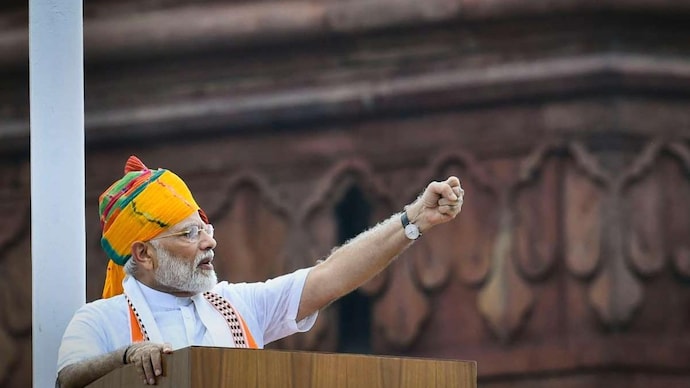Why Modi govt needs to go beyond CDS
Creation of the office of the CDS faces the risk of being dubbed as a futile exercise similar to having a Chairman CoCS.

In Short
- Recommendation for chief of defence staff was made nearly two decades ago
- Advance militaries such as the US and China have chief of defence staff
- Both the US and China follow theatre command structure for better efficiency
Pending for nearly two decades, Prime Minister Narendra Modi has given a go-ahead for creation of the office of the chief of defence staff. PM Modi, in his Independence Day speech, said, "To further sharpen coordination between the forces, India will have Chief of Defence Staff, CDS which will make the forces even more effective."
Many have described it as a game-changer announcement in reform-resistant Indian military. One does not expect a prime minister to speak about such matters in public but the gravity of situation could be understood from PM Modi's reference to coordination bit in his address from the ramparts of the Red Fort.
PM Modi said, "It will help all three services to walk together as the country can no longer afford to work in silos."
To understand if a chief of defence staff can actually be a game-changer, it is imperative to have a look at how the current command structure of the armed forces works.
Unlike other large and efficient militaries, India does not follow a theatre command structure. It follows single-service command structure. Indian has 19 commands - six of the Indian Army, three of the Indian Navy, seven of the Indian Air Force, one tri-service command at Andaman and Nicobar Islands and the Strategic Forces Command (SFC).
Each of these commands report through separate chains to their respective chiefs, who are not known for best of coordination.
Take another example. All three forces have separate Eastern, Western and Southern commands. Army and air force also have Central and South-Western commands. Same name, same regions, different headquarters and at times diverging strategies. This prevents seamless performance in the times of conflict or war.

Creating a post of chief of defence staff was recommended in the aftermath of the Kargil conflict. A high-level committee -- Kargil Review Committee -- headed by K Subrahmanyam was formed in 1999 to look into the lapses that led to Kargil situation. Incidentally, Subrahmanyan had rejected to accept Padma Bhushan award by the government the same year.
The KRC recommended a unified command structure for the defence forces. A group of ministers (GoM), formed to study the KRC report, later came up with the recommendation of the CDS. The three forces could not agree to the suggestion. The Congress - in Opposition - too opposed the move.
An Integrated Defence Staff (IDS) was created as a compromise and its role was to assist chairman of the chief of staff committee (Chairman CoCS), a toothless position. Air Chief Marshal BS Dhanoa is the current Chairman CoCS. This position is considered first among equals and cannot give direction to other arms of defence forces than the one the person heads.
It is yet not clear if the CDS would be a four-star (the rank of current chiefs of three forces) or a five star, as originally recommended. At present there is no five-star rank military officer.
It is also not clear if he will report to the prime minister directly or the defence minister or the national security advisor NSA). In the current set up, the NSA heads the Defence Planning Committee (DPC), created last year, in the Prime Minister's Office. It comprises of three chiefs of the forces and defence, foreign and expenditure secretaries.
Creation of the DPC underscores the need for urgent structural reforms of the Indian military. There have been calls for reorganising the military structure along theatre command.
Theatre command means all three arms of the military would work under a unified command - modeled after the CDS at the central level.
Top militaries such as that of the US and China follow this command structure. The US military works under six theater command while China in 2015 shunned seven regional commands - like India's - to have a leaner five threatre commands.

Incidentally, in 2016, PM Modi had called upon the military leadership to reform their "beliefs, doctrines, objectives and strategies" while addressing the Combined Commanders Conference.
To make the theatre command work more efficiently, China announced a phased reduction in the number of soldiers. Till recently, China's military strategy was to overwhelm the enemy with military manpower. Now, it is focusing on saving manpower and overwhelm enemy with technological prowess.
India has the fourth largest defence budget in the world but a huge chunk of it goes into payment of salary and pensions of soldiers and towards maintenance of infrastructure. A very little fund is left for modernization, which is a critical component given the fast changing nature of modern warfare.
In the absence of much needed reform in the defence forces, the creation of the office of the CDS faces the risk of being dubbed as a futile exercise similar to having a Chairman CoCS.
